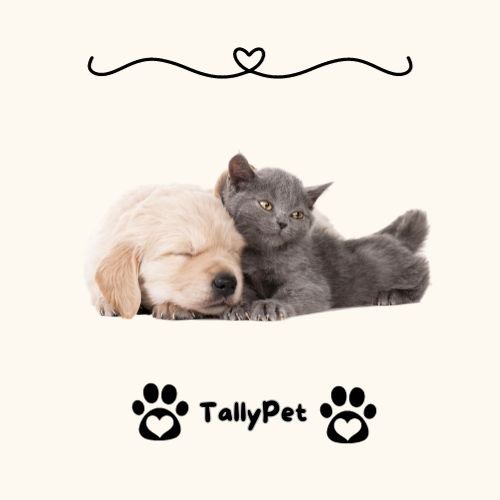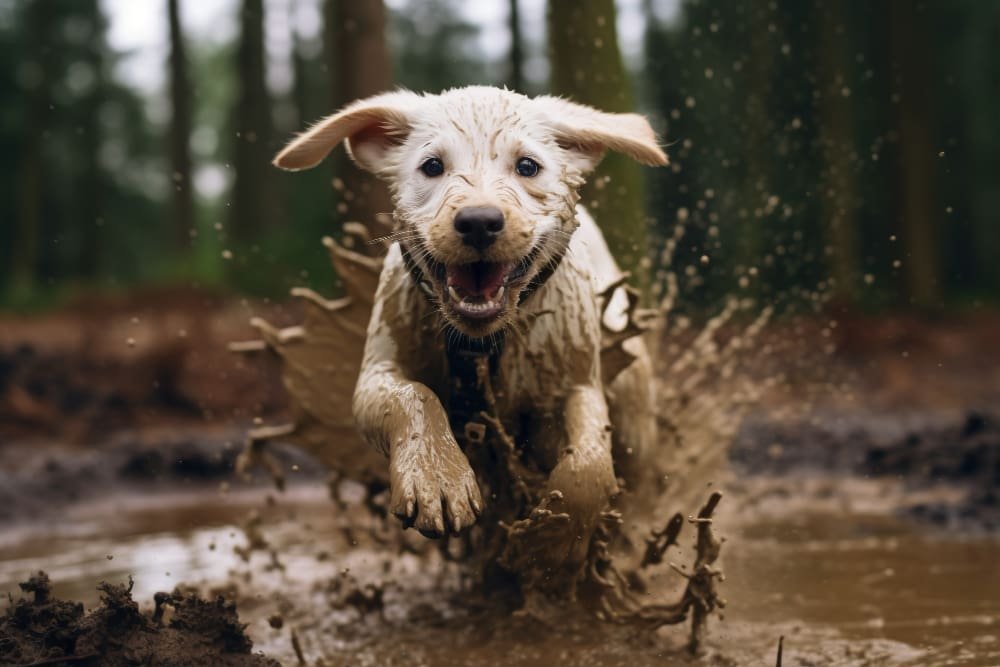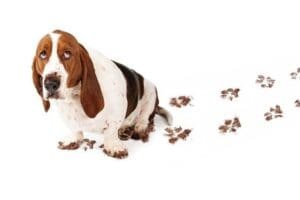Cleaning tips are essential when living with an active dog that loves to explore and play outdoors. While the joy and companionship they bring are immeasurable, the messes they create can be overwhelming. Muddy paws, accidental stains, and scattered debris can quickly turn your home into a cleaning nightmare. However, with the right cleaning tips in your arsenal, you can easily tackle the challenges that come with having an energetic furry friend.
In this article, we’ll share a collection of efficient and effective cleaning tips designed to help you keep your home spotless and hygienic, even with an active dog by your side. From dealing with muddy paw prints to removing stubborn stains, these cleaning tips will simplify your routine and allow you to spend more quality time with your beloved canine companion. So, let’s dive in and discover how these cleaning tips can transform your home and make your life as a dog owner much easier!
Preventing Messes
Outdoor preparation
When it comes to preventing messes, outdoor preparation is key. Before heading out for a walk or playtime, consider investing in a good quality leash or harness to have better control over your active pup. If your dog loves to dig, create a designated digging area in your yard where they can freely indulge in their digging instincts without causing a mess in other parts of your lawn. Additionally, keeping your yard well-maintained, with regular mowing and removal of debris, can help minimize the amount of dirt that your furry friend brings inside.
Indoor precautions
Inside your home, there are a few precautions you can take to prevent messes caused by your active dog. Placing runners or mats near entryways can capture any dirt or mud that your dog may track in. You could also consider creating a designated area near the entryway, like a mudroom or an easily cleanable space, where your dog can be dried off before entering the rest of the house. Another effective way to prevent messes is by keeping a towel or wipes handy during wet weather or after outdoor activities. By quickly wiping your dog’s paws, you can minimize the amount of dirt they bring inside and save yourself from having to clean up later.
Cleaning Mud
Removing excess mud
Dealing with muddy paws can be a challenge, but with the right techniques, it can be a breeze. Start by giving your dog’s paws a gentle wipe with a towel or use a soft-bristled brush to remove the excess mud. If the mud is especially stubborn, you can also try using a pet-specific paw wash or a gentle pet shampoo mixed with warm water to loosen the dirt.
Dealing with dried mud
Dried mud can be trickier to remove, but it’s not impossible. Begin by using a soft-bristled brush or your fingertips to gently loosen the dried mud from your dog’s fur. Be careful not to tug or pull on the fur too hard. Once the larger chunks of dried mud are removed, you can use a damp cloth or a pet-friendly wet wipe to further clean the affected areas. If the dried mud is particularly stubborn, you may need to give your dog a quick bath to fully remove it.
Cleaning muddy paws
Cleaning muddy paws is a task that often needs immediate attention to prevent dirt from spreading throughout your home. Keep a shallow basin or a towel by your door to wipe down your dog’s paws before allowing them indoors. If your dog is resistant to having their paws wiped, you can try using a paw-cleaning device designed specifically for this purpose. These devices often have gentle bristles or silicone tips that can effectively remove mud and dirt from your dog’s paws.
Cleaning Stains
Removing urine stains
Accidents happen, especially when you have an active dog. To clean urine stains, start by blotting the area with a clean cloth or paper towel to absorb as much liquid as possible. Avoid rubbing the stain, as it can push the urine deeper into the carpet or fabric. Once the excess moisture is removed, you can use a mixture of vinegar and water or a pet-safe enzymatic cleaner to treat the stain. Blot the stain with the cleaner until the discoloration fades, and then rinse the area with water and blot dry.
Treating feces stains
Cleaning feces stains promptly is crucial for maintaining a clean living space. Carefully remove any solid waste using gloves or a plastic bag, being cautious not to smear it further into the surface. Next, mix a solution of warm water and mild detergent, and dab the stained area with a clean cloth or sponge. Blot the stain gently to lift it, rinsing the cloth or sponge as needed. Once the stain is removed, rinse the area with clean water and blot dry to prevent any remaining residue.
Cleaning vomit stains
Vomit stains can be particularly unpleasant to clean, but with the right approach, you can tackle them effectively. Start by removing any solids with gloves or a plastic bag, taking care not to press the vomit further into the surface. Mix a solution of water and mild detergent, and gently blot the stain with a clean cloth or sponge. Work from the outside of the stain inward to avoid spreading it. Rinse the cloth or sponge as needed and continue blotting until the stain is no longer visible. Finally, rinse the area with water and blot dry.
Managing Odors
Using odor-neutralizing products
When it comes to managing odors caused by your active dog, odor-neutralizing products can be a life-saver. Look for enzymatic cleaners specifically designed to target pet odors, as they contain enzymes that break down odor-causing molecules. Follow the instructions on the product and apply it to the affected area, allowing sufficient time for the enzymes to work. Afterward, thoroughly rinse the area with water and ensure it is completely dry to prevent any lingering smells.
Homemade deodorizing solutions
If you prefer a more natural approach, there are several homemade deodorizing solutions you can try. Baking soda is a versatile and effective odor absorber. Sprinkle it liberally over carpeted areas or on furniture, leave it for a few hours or overnight, and vacuum it up. You can also create a simple vinegar and water solution by mixing equal parts of both ingredients. Spray this solution onto fabrics or wipe down hard surfaces to neutralize odors. Remember to test these solutions on a small, inconspicuous area first to ensure they do not damage or discolor the surface.
Grooming Tips
Regular brushing
Regular brushing is essential for maintaining a clean and healthy coat. Not only does it help remove loose hair, but it also prevents mats and tangles from forming. Use a brush or comb specifically designed for your dog’s coat type and brush in the direction of hair growth. Take your time and be gentle, especially around sensitive areas like the face and belly. Regular brushing also allows you to check for any skin issues or parasites, promoting your dog’s overall well-being.
Keeping nails trimmed
Trimming your dog’s nails is an important part of their grooming routine. Overgrown nails can be uncomfortable for your dog and may cause them to inadvertently scratch surfaces or individuals. If you’re unsure about how to properly trim your dog’s nails, consult with a veterinarian or a professional groomer. They can provide guidance or even demonstrate the process for you. Remember to use specialized nail clippers designed for dogs and to be cautious not to cut too close to the quick, which can cause bleeding.
Bathing routines
Maintaining a regular bathing routine is crucial for keeping your active dog fresh and clean. The frequency of baths may vary depending on your dog’s breed, activity level, and skin condition. Use a shampoo that is specifically formulated for dogs, as human shampoo can disrupt the natural pH balance of their skin. Wet your dog’s coat thoroughly, apply the shampoo, and lather it gently. Be careful to avoid getting shampoo in their eyes, ears, or mouth. Rinse the shampoo thoroughly and ensure that your dog is completely dry before allowing them to go outside to prevent them from catching a chill.
Cleaning Bedding
Washing dog beds
Properly washing your dog’s bed is essential for both hygiene and odor control. Check the bed’s label for any specific washing instructions, such as temperature or cycle recommendations. Remove any removable covers or cushions and wash them separately. Use a gentle detergent and wash the items on a cycle suitable for the fabric type. To remove odors, consider adding a cup of vinegar or a pet-safe odor eliminator to the wash cycle. Once washed, ensure the bed is completely dry before placing it back in your dog’s sleeping area.
Spot cleaning for accidents
Accidents can happen, especially if your dog is still being housetrained. If your dog has an accident on their bed, it’s important to act quickly. Remove any solid waste and blot the area with a clean cloth or paper towel to absorb as much liquid as possible. Mix a solution of warm water and mild detergent, and gently blot the stained area with a clean cloth or sponge. Continue blotting until the stain is no longer visible, rinsing the cloth or sponge as needed. Once the area is clean, rinse with water and blot dry thoroughly.
Cleaning Toys
Basic toy cleaning
Regularly cleaning your dog’s toys is important to prevent the buildup of dirt, bacteria, and unpleasant odors. For most toys, a simple wash with mild dish soap and warm water will do the trick. Use a cloth or sponge to scrub the surface of the toys, paying extra attention to any crevices or grooves where dirt may accumulate. Rinse the toys thoroughly with clean water and allow them to air dry completely before giving them back to your pup.
Sanitizing dog toys
In addition to regular cleaning, periodically sanitizing your dog’s toys is beneficial, especially if your dog enjoys playing with them outdoors or shares them with other dogs. One effective method is to soak the toys in a mixture of warm water and pet-safe disinfectant. Follow the instructions on the disinfectant product and leave the toys to soak for the recommended amount of time. Afterward, thoroughly rinse the toys with clean water to remove any remaining disinfectant. Allow the toys to dry completely before returning them to your dog.
Maintaining a Clean Living Space
Floor protection measures
To minimize the mess on your floors, it’s wise to implement some floor protection measures. Consider using washable or disposable pee pads in areas where your dog tends to have accidents. These pads can absorb liquid and prevent it from seeping into your floors. Additionally, placing rugs or mats in high-traffic areas can help trap dirt and debris before it spreads throughout your living space. Make sure to choose rugs or mats that are easy to clean or are machine washable.
Furniture cleaning techniques
If your dog is allowed on the furniture, it’s important to regularly clean and maintain it to prevent any lingering odors or stains. Depending on the type of furniture, there are various cleaning techniques you can employ. For fabric upholstery, vacuum regularly to remove dirt and pet hair. Spot-treat any stains using a mixture of water and mild detergent, being careful not to saturate the fabric. For leather or vinyl furniture, use a pet-safe cleaner and follow the manufacturer’s instructions. Regularly wiping down surfaces with a damp cloth can also help prevent dirt and oil build-up.
Car Cleaning Tips
Using seat covers
If you frequently travel with your active dog, investing in seat covers for your car can be a game-changer. Not only do they protect your seats from mud, dirt, and potential accidents, but they also make cleaning a breeze. Look for seat covers specifically designed for pets, as they often offer features like waterproof materials and easy installation. Simply remove the seat covers when they become dirty, shake off any debris, and wash them according to the manufacturer’s instructions.
Cleaning car seats and upholstery
Cleaning your car seats and upholstery after a muddy adventure is essential to prevent odors and stains from setting in. Start by removing any loose dirt or debris using a vacuum or brush. For fabric seats, use a mixture of warm water and mild detergent to gently scrub the affected areas. Rinse with clean water and blot dry. If you have leather or vinyl seats, use a specialized cleaner designed for these materials, following the instructions provided. Remember to thoroughly dry the seats to avoid any moisture-related issues.
Professional Cleaning Services
When to consider professional help
While regular cleaning and maintenance can effectively manage most messes caused by active dogs, there may be situations where professional help is necessary. If you have significant stains that you’re unable to remove, it may be worth reaching out to a professional carpet cleaning service. They have the expertise and equipment to tackle tough stains and odors effectively. Additionally, if you find it challenging to keep up with the cleaning demands or if your dog tends to have frequent accidents, a professional cleaning service can provide assistance on a regular basis.
Choosing a reputable cleaning service
When selecting a professional cleaning service, it’s essential to choose one that is reputable and experienced in handling pet-related cleaning tasks. Ask for recommendations from friends, family, or your veterinarian. Research online reviews and ratings to ensure the cleaning service has a track record of customer satisfaction. It’s also important to inquire about their cleaning methods, products used, and any guarantees they offer. Obtaining a detailed quote that outlines the services to be provided and the associated costs will ensure transparency and avoid any surprises.


